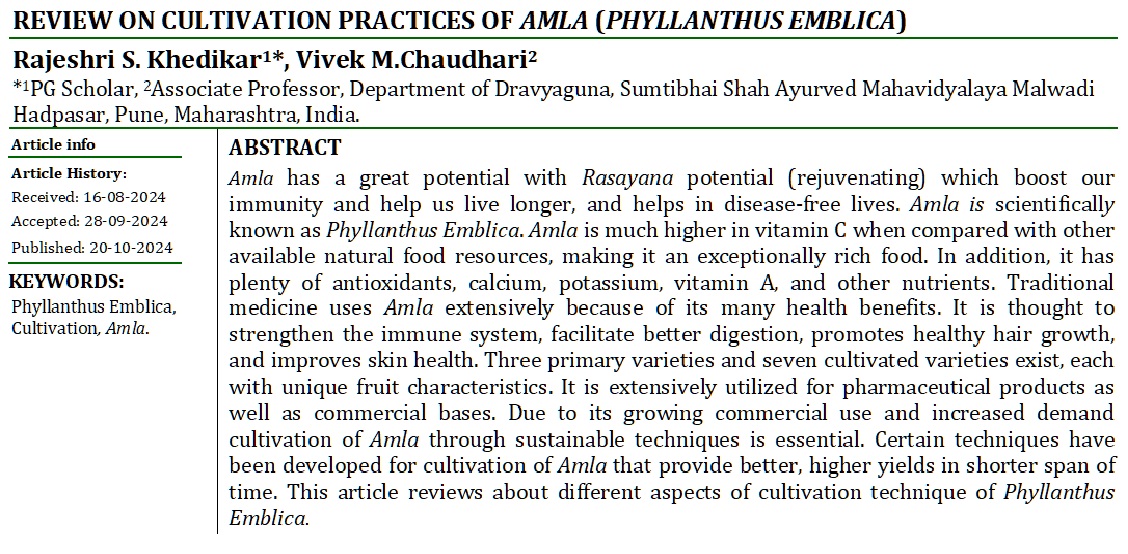Review on Cultivation Practices of Amla (Phyllanthus Emblica)
Abstract
Amla has a great potential with Rasayana potential (rejuvenating) which boost our immunity and help us live longer, and helps in disease-free lives. Amla is scientifically known as Phyllanthus Emblica. Amla is much higher in vitamin C when compared with other available natural food resources, making it an exceptionally rich food. In addition, it has plenty of antioxidants, calcium, potassium, vitamin A, and other nutrients. Traditional medicine uses Amla extensively because of its many health benefits. It is thought to strengthen the immune system, facilitate better digestion, promotes healthy hair growth, and improves skin health. Three primary varieties and seven cultivated varieties exist, each with unique fruit characteristics. It is extensively utilized for pharmaceutical products as well as commercial bases. Due to its growing commercial use and increased demand cultivation of Amla through sustainable techniques is essential. Certain techniques have been developed for cultivation of Amla that provide better, higher yields in shorter span of time. This article reviews about different aspects of cultivation technique of Phyllanthus Emblica.
Downloads

Copyright (c) 2024 International Journal of Ayurveda and Pharma Research

This work is licensed under a Creative Commons Attribution-NonCommercial-ShareAlike 4.0 International License.






